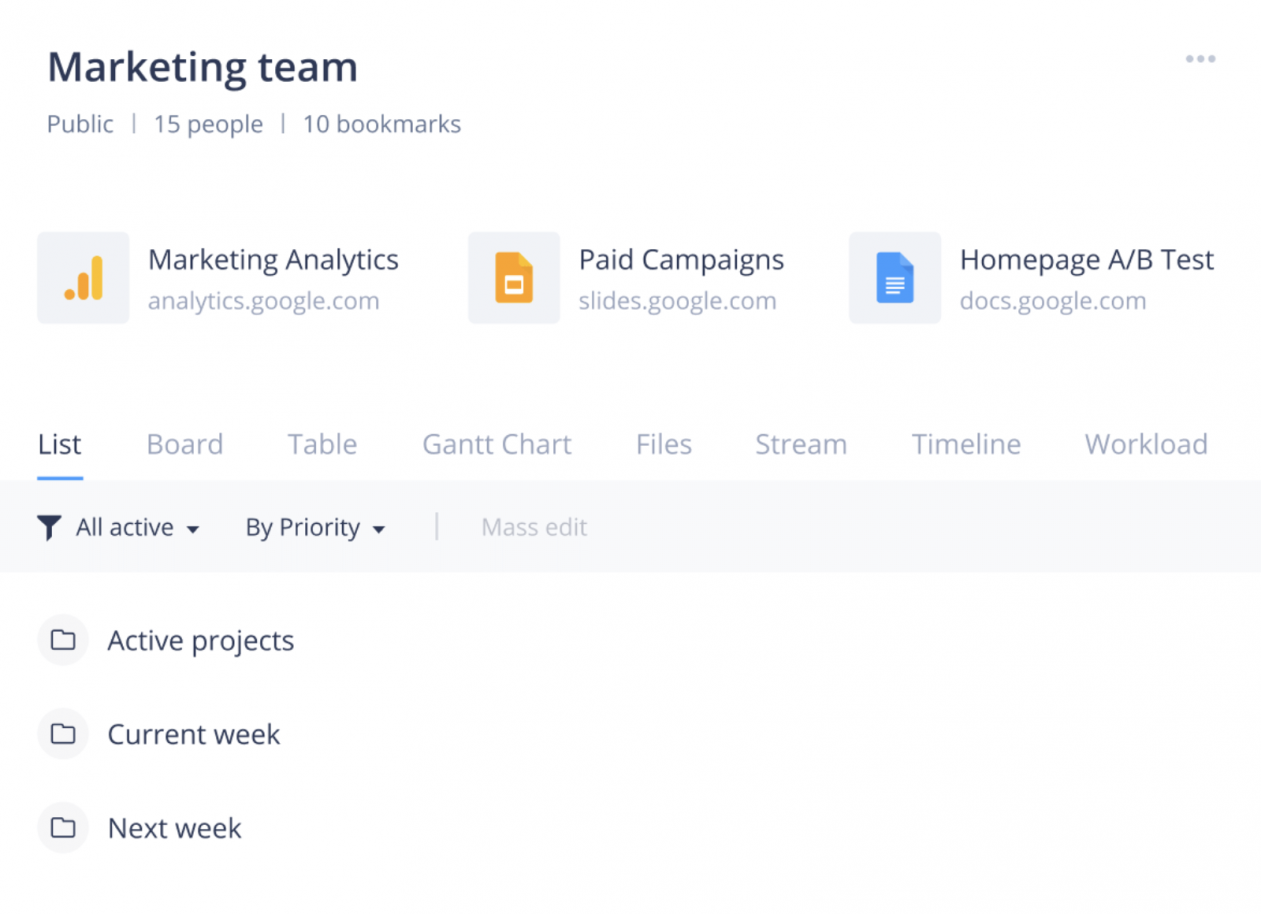This year, long-term remote work became an unexpected reality for teams across the globe and across industries. In many ways, this shift to remote-first accelerated an already emerging trend of increased workplace flexibility. But, as organizations plan reopenings and consider reduced capacity offices, could hybrid team management and hybrid remote working be the future of the modern workplace?
Forecasts from Global Workplace Analytics predict that 25–30% of the U.S. workforce will be working from home multiple days per week by the end of 2021. Meanwhile, 53% of respondents in one Gallup poll said they planned to work from home more often than they previously did, even after restrictions are lifted. With social distancing measures and employee preferences to consider, it only stands to reason that employers will eye more flexible workplace solutions such as a hybrid office setup and staggered attendance structures.
While none of us know what will happen after the pandemic, hybrid team management may be one way that companies address the changing needs of their business and employees.
What is a hybrid team?
Traditionally, a hybrid team has been defined as a mix of co-located employees and remote workers. This term has evolved, however, to include workers who want to split their time in the office and at home during the week. Increasingly, global workers are expressing a preference for a hybrid work environment.
This desire for a hybrid office policy might be attributed to a number of factors, including changing responsibilities at home (i.e. teaching young children, taking care of relatives, lack of childcare, and increased “life admin”), levels of productivity, and even feelings of social isolation.
Where possible, employees might choose to work out of their company’s office two or three days a week while making use of their work from home setups the rest of the time. While this may not be a current option for many due to local health guidelines, this increased level of flexibility will likely be an attractive solution as restrictions ease.
How do hybrid teams benefit organizations?
Hybrid team management allows businesses to be agile, flexible, and diverse in their approach to hiring and retaining talent. Working parents, caretakers, out of towners, and even fully remote workers may be encouraged to apply for roles they may not have had access to previously.
Equally as important, hybrid team management focuses employee preferences and wellbeing in a tangible way.
Wrike Dublin Workplace Operations Manager Tabitha Moran agrees, explaining that the benefits of a flexible approach “become obvious when you consider that everyone is different and is coming from a different perspective and situation in their private life.”
“Some crave frequent social interaction with others and so a couple of days in the office having face-to-face conversations rather than via Zoom could be beneficial for their mental health and mood,” Tabitha explains. “As a member of the HR Team, I know that we care about people’s work-life balance, their job satisfaction, and their general mental health. For most, the option to have the freedom to decide what work environment will best serve them on a day-to-day basis should be beneficial.”
Hybrid office environments may also benefit employee retention efforts. Forbes notes that employee attrition can be costly, explaining that workers who are afforded greater flexibility over their work schedules tend to feel “empowered.”
Of course, hybrid office management has its own set of challenges, especially in the era of a global pandemic.
Contact tracing efforts for employees who come into a physical office will need to be robust. And, as Tabitha explains, “operationally, it could prove difficult to predict the required onsite resources when the numbers of people attending the office would be so fluid and ever-changing.”
Tips for managing a hybrid team
So, your team is going hybrid. Now what?
First, it’s important to acknowledge that while managing remote workers may not be the most ideal work environment, it’s probably the most realistic.
Decreased building capacity, furniture distancing measures, and other sanitary requirements will inevitably mean staggered in-person attendance is the preferred option. That may leave just a fraction of employees attending the office on any given day, meaning the rest will have to work from home more than once a week.
Secondly, working closely with employees and understanding their preferences is essential for any return to work plan — even in a hybrid environment.
How to develop a hybrid work environment
Cultivate a hybrid business and team strategy that is both practical and empathetic. A functional hybrid team can minimize information blind spots by promoting increased visibility and checking in with employees on their current and future plans for splitting their time.
Create digital workspaces
Tools that encourage visibility as well as the accessible sharing of resources and information ensure teams remain connected, even in the face of flexible working environments. When some employees have discussions in-person, there can be an accidental exclusion of remote colleagues. Wrike solves this issue by creating a digital hub consisting of team dashboards, spaces, folders, and projects that teams can access from any location.
Return to office training
You’ve undoubtedly heard that work is “changing.” This is clear. However, one practical and immediate way that work is changing is through the adoption of new protocols designed to help keep employees safe. Communicating new rules around mask-wearing, hot desking, workspace sanitizing, and other protocols is essential when considering how to welcome employees back into the office — even on a part-time basis. Leave nothing ambiguous and employ the use of employee training platforms like Brainshark to make sure people have completed essential training and understood what is required of them in this new environment.
Small but meaningful gestures
Just because some employees are considering heading back to the office in a hybrid capacity does not mean that employee appreciation gestures should cease. If you’ve been offering employees perks like paid monthly mental health days off, gift cards, treat boxes, etc. consider continuing to offer these things.
Emphasize employee engagement and workplace culture
Zoom fatigue is real, and that doesn’t stop in a hybrid work environment. All-team happy hours and office parties may not be possible right now, but team camaraderie and culture are as important as ever.
“Occasional remote events are fun, as long as we don’t expect too much commitment and time from people,” explains Tabitha. “Challenges to complete in your own time like the 5x5x5 (run 5km a day for 5 days and donate $5 charity challenge), or the Slack takeovers (theme-based Slack photos — i.e., baby pictures, celeb lookalikes) have been good for engagement and encouraging employees to maintain their camaraderie and team spirit.”
Make employee development a priority
In a hybrid remote environment, it’s easy to feel like your contributions go unnoticed, simply due to a lack of face-to-face communication with managers and higher-ups. This may be exacerbated by some colleagues working from the office more often or on more opportune days than others. As a manager or leader in such an environment, it’s important to provide equal opportunities for professional development and progression — no matter where team members are located and how often they choose to work out of the office.
Resources for remote and hybrid teams
- Online Team Building Activities Your Company Needs
- Tips for Agile Team Management When Working Remotely
- How To Plan the Perfect Remote Kickoff Meeting With a New Client
- Top Tips for Building Team Camaraderie in a Remote Workplace
Use Wrike to develop your hybrid team strategy
Considering a transition to a remote hybrid office environment? Plan and execute your strategy with Wrike. We can help you…
- Plan workplace training for a hybrid return to office
- Improve work visibility and synchronization for in-office, remote, and hybrid working colleagues
- Track time to ensure accurate client billing from anywhere
- Get rid of productivity-killing silos by cutting down on inefficient workflows and improving the quality of communication and information sharing
Use Wrike’s flexible features to prepare for the future of working — regardless of what that looks like. Try Wrike free for two weeks and see why 2 million+ users trust us to do the best work of their lives, from anywhere.






